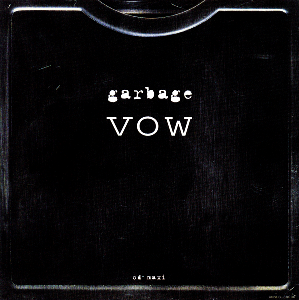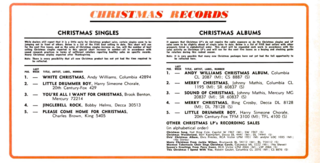The Billboard Hot 100 is the music industry standard record chart in the United States for songs, published weekly by Billboard magazine. Chart rankings are based on sales, online streaming, and radio airplay in the U.S.
The Billboard charts tabulate the relative weekly popularity of songs and albums in the United States and elsewhere. The results are published in Billboard magazine. Billboard biz, the online extension of the Billboard charts, provides additional weekly charts, as well as year-end charts. The two most important charts are the Billboard Hot 100 for songs and Billboard 200 for albums, and other charts may be dedicated to a specific genre such as R&B, country, or rock, or they may cover all genres. The charts can be ranked according to sales, streams, or airplay, and for main song charts such as the Hot 100 song chart, all three data are used to compile the charts. For the Billboard 200 album chart, streams and track sales are included in addition to album sales.

"I'll Be There" is the first single released from Third Album by The Jackson 5. It was written by Berry Gordy, Hal Davis, Bob West, and Willie Hutch.

Airplay is how frequently a song is being played through broadcasting on radio stations. A song which is being played several times every day (spins) would have a significant amount of airplay. Music which became very popular on jukeboxes, in nightclubs and at discotheques between the 1940s and 1960s would also have airplay.
Bubbling Under Hot 100 Singles is a chart published weekly by Billboard magazine in the United States. The chart lists the top songs that have not yet charted on the main Billboard Hot 100. Chart rankings are based on radio airplay, sales, and streams. In its initial years, the chart listed 15 positions, but expanded to as many as 36 during the 1960s, particularly during years when over 700 singles made the Billboard Hot 100 chart. From 1974 to 1985, the chart consisted of 10 positions; since 1992, the Bubbling Under Hot 100 Singles chart has listed 25 positions.

"Vow" is a song by alternative rock band Garbage. It was released as their debut single in early 1995 by Discordant, a label set up by Mushroom Records to launch the group, and Almo Sounds in North America.
The Adult Contemporary chart is published weekly by Billboard magazine and lists the most popular songs on adult contemporary radio stations in the United States. The chart is compiled based on airplay data submitted to Billboard by stations that are members of the Adult Contemporary radio panel. The chart debuted in Billboard magazine on July 17, 1961. Over the years, the chart has gone under a series of name changes, being called Easy Listening(1961–1962; 1965–1979), Middle-Road Singles(1962–1964), Pop-Standard Singles(1964–1965), Hot Adult Contemporary(1984–1996) and Adult Contemporary(1979–1984, 1996–present) The current number-one song on the chart is "Flowers" by Miley Cyrus.

"We Like to Party!" is a song by Dutch Eurodance group Vengaboys. It was released in the Netherlands in May 1998 as the fourth single from the band's debut album, Up & Down – The Party Album (1998). Following its success in Benelux, it was given a worldwide release on 9 November 1998.
A hit song, also known as a hit record, hit single or simply hit, is a recorded song or instrumental that becomes broadly popular or well-known. Although hit song means any widely played or big-selling song, the specific term hit record usually refers to a single that has appeared in an official music chart through repeated radio airplay audience impressions, or significant streaming data and commercial sales.

"Hips Don't Lie" is a song by Colombian singer-songwriter Shakira, featuring Haitian rapper Wyclef Jean, released by Epic Records in 2006 as the second single from Shakira's seventh studio album, Oral Fixation, Vol. 2 (2005). Shakira and Jean wrote the lyrics and jointly composed the music with additional co-writing by Shakira's percussionist Archie Pena. The song was produced by Shakira and Jean with additional co-production by Jerry Duplessis. "Hips Don't Lie" is a reworking of Jean's earlier single "Dance Like This", therefore it features additional composing credits by Omar Alfanno, Duplessis, Luis Días, and LaTavia Parker. The song incorporates samples from "Amores Como el Nuestro" written by Alfanno, and "Carnaval " written by Días.
Billboard Year-End charts are cumulative rankings of entries in Billboard magazine charts in the United States in any given chart year. Several hundred Year-End charts are now published by Billboard, the most important of which are the single or album charts based on Hot 100 and Billboard 200 respectively.

The discography of Nirvana, an American rock band, consists of three studio albums, twenty-one singles, five live albums, two extended plays, four compilation albums, and three box sets.

"Take a Picture" is a song by American rock band Filter, released to radio in September 1999 as the second single from their second studio album, Title of Record (1999). The song became a hit at the start of 2000 following its January 18 retail release, peaking at number 12 on the US Billboard Hot 100 and number three in Canada. It also became a top-10 hit in New Zealand, peaking at number eight on the RIANZ Singles Chart.
Broadcast Data Systems is a service that tracks radio, television and internet airplay of songs. The service, which is a unit of MRC Data, is a contributing factor to North American charts published by co-owned magazine Billboard, including the Billboard Hot 100 and Canadian Hot 100, when combined with sales and streaming data from Soundscan.

"This Kiss" is a song by American country music singer Faith Hill from her third studio album Faith. It was written by Beth Nielsen Chapman, Robin Lerner and Annie Roboff, and produced by Hill and Byron Gallimore. It was released on February 23, 1998, as the album's first single.

Prince released several hundred songs both under his own name and under pseudonyms and/or pen names, as well as writing songs which have been recorded by other artists. Estimates of the actual number of songs written by Prince range anywhere from 500 to well over 1,000. He has released 117 singles, 41 promotional singles, 24 internet singles, and eight internet downloads.

"The Fighter" is a song by New Zealand Australian country music singer Keith Urban featuring American country music singer Carrie Underwood. It was released on 6 February 2017 as the fifth and final single from Urban's 2016 album, Ripcord. Urban co-wrote and co-produced this song with busbee. The song has entered the record charts of Australia, Canada, the United States, Belgium, and Scotland, where it became Urban's first song to enter the Scottish and Belgian charts.

Billboard magazine only charted Christmas singles and albums along with the other popular non-holiday records until the 1958 holiday season when they published their first section that surveys only Christmas music.










